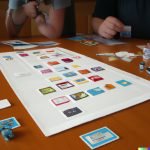Are you ready to take a trip down memory lane to the sweet and colorful world of Candyland Classic Board Game? This timeless and beloved game has been a staple in many households for generations, captivating players with its charming design and simple yet engaging gameplay. From its origins to its cultural impact, there’s so much to uncover about this iconic board game.
The Candyland Classic Board Game has been a favorite among children and families for decades, offering a delightful mix of adventure and fun. Whether you’re nostalgic for your own childhood experiences with the game or introducing it to a new generation, the appeal of Candyland is undeniable. With its vibrant illustrations and candy-themed pathway, it’s easy to see why this game has stood the test of time.
In this article, we’ll explore the fascinating history and origins of Candyland, delve into the gameplay and rules that have made it a classic, examine the development and evolution of the game over the years, and even provide tips and strategies for mastering this deceptively simple but surprisingly strategic game. So get ready to indulge your sweet tooth as we journey into the whimsical world of Candyland Classic Board Game.
History and Origins of Candyland
Candyland, a classic board game beloved by children and adults alike, has a rich history and fascinating origins. The game was first created in the 1940s by Eleanor Abbott, a schoolteacher in San Diego, California.
She developed the game as a way to entertain children who were recovering from polio at a local hospital. The colorful and vibrant design of Candyland was meant to bring joy and amusement to the young patients, and it quickly became a popular pastime among them.
The original version of Candyland was hand-drawn by Eleanor Abbott herself, featuring winding paths through lollipop woods, gumdrop mountains, and other whimsical locations. The game was eventually picked up by Milton Bradley Company (now part of Hasbro), who mass-produced it for commercial release in 1949. Since then, Candyland has undergone several redesigns and updates, but its core concept has remained unchanged – navigating through a magical world of candy-themed landscapes.
Over the years, Candyland has become an iconic staple in the world of board games and has captured the hearts of generations of players. Its enduring popularity can be attributed not only to its simple gameplay but also to its heartwarming origin story.
As one of the first board games designed specifically for young children, Candyland holds a special place in the history of tabletop gaming. Today, it continues to be cherished as a timeless classic that brings joy and nostalgia to players of all ages.
| Year | Significant Event |
|---|---|
| 1940s | Eleanor Abbott creates the first version of Candyland |
| 1949 | Candyland is released commercially by Milton Bradley Company |
| Present | Candyland remains an iconic classic in board game history |
Gameplay and Rules of Candyland Classic Board Game
The gameplay and rules of the Candyland Classic Board Game are simple and perfect for young children. The game is designed for 2-4 players, making it a great option for family game nights or playdates with friends. The objective of the game is to be the first player to reach the end of the winding, colorful path on the game board.
The rules of Candyland are straightforward, making it accessible for players as young as 3 years old. Players take turns drawing colored cards from a deck that correspond to colors on the game board.
They then move their colored pawn to the next space that matches the color on their card. If a player draws a special card, such as a gingerbread man or a candy cane, they must follow its specific instructions, which can either advance them further along the path or move them backwards.
To add an element of surprise and excitement to the game, players never know what color card they will draw next, which adds an unpredictable element that keeps children engaged and entertained throughout gameplay. The simplicity and unpredictability of Candyland’s gameplay make it a beloved classic among families and early childhood educators alike.
Some basic tips for playing Candyland include:
- Encourage players to help each other read their color cards and guide them along the game board.
- Emphasize good sportsmanship, celebrating everyone’s progress regardless of who is in lead.
- Consider adding variations to gameplay, such as limiting movement based on color cards drawn or instituting house rules for special spaces on the board.
Overall, Candyland’s easy-to-understand rules and cheerful design make it a timeless favorite among young children and parents looking for an entertaining yet educational game for kids.
Characters and Design of the Game
When it comes to the Candyland Classic Board Game, one of the most charming and enduring aspects is its delightful characters and vibrant design. The game is set in a magical world made entirely of candy, featuring all sorts of sweet treats and imaginative landscapes. From King Kandy to Queen Frostine, each character in Candyland has its own unique look and personality that adds an extra layer of fun to the gameplay experience.
The game board itself is a visual feast, with colorful winding paths that lead players through the whimsical world of Candyland. Each square on the board features a different candy-themed location, such as Gumdrop Mountains and Lollipop Woods, adding to the enchanting design of the game. The bright colors and creative illustrations make Candyland visually appealing for players of all ages, capturing the imagination and bringing the magical candy-filled world to life.
In addition to the characters and game board, the design of Candyland also includes iconic elements such as the signature gingerbread men playing pieces and vibrant cards featuring even more delectable sweets. The attention to detail in both the characters and overall design contributes to the timeless charm of this classic board game, making it a beloved favorite for generations.
Development and Evolution of Candyland Over the Years
Since its introduction in 1949, Candyland has undergone many changes and developments to keep up with the times and appeal to new generations of players. The game was originally designed by Eleanor Abbott, a retired schoolteacher, who created Candyland as a way to entertain children recovering from polio. The original game featured simple colored spaces on a winding path through the candy-themed world, but over the years, there have been several different versions released.
The first major update to the game came in 1984 when Milton Bradley introduced a new version of Candyland with a more modern design and artwork. This update added more detail to the board and revamped the appearance of the game’s characters and locations. Subsequent editions have continued to make changes to keep Candyland looking fresh and engaging for kids, including special editions featuring popular movie or TV show tie-ins.
One of the biggest evolutions of Candyland has come in recent years with the launch of digital versions of the game. In addition to traditional board games, children can now play Candyland on computer tablets and smartphones. These digital adaptations offer interactive features that enhance gameplay while still retaining the classic charm of the original board game. As technology continues to advance, it will be interesting to see how Candyland evolves in response to these changes in gaming preferences.
| Year | Event |
|---|---|
| 1949 | Original version of Candyland created by Eleanor Abbott |
| 1984 | Milton Bradley releases updated version with modern design |
| 2000s – present | Digital versions of Candyland introduced for tablets and smartphones |
Tips and Strategies for Winning at Candyland
Understanding the Rules and Gameplay
The key to winning at Candyland lies in understanding the rules and gameplay of the classic board game. The game is simple, with players drawing colored cards and moving their pawn to the next space of that color on the winding path through Candyland. However, it’s important to strategize when to use special cards like “Ice Cream Float” or “Gingerbread Man” to your advantage, as they can either assist you in getting ahead or set back your opponents.
Observing Your Opponents
Another important strategy for winning at Candyland is observing your opponents’ progress on the game board. By paying attention to which colored spaces they are aiming for, you can anticipate their next moves and plan yours accordingly. Additionally, being mindful of which special cards they have drawn can allow you to adjust your strategy in order to maintain a competitive edge.
Anticipating Card Draws
A crucial aspect of winning at Candyland is anticipating card draws. While luck plays a significant role in this game, having an understanding of the distribution of colors in the deck can help you strategize your moves more effectively. By knowing which colored spaces lie ahead on the game board, you can plan ahead and have a better chance at reaching the end of Candyland first.
By incorporating these tips and strategies into your gameplay, you will be better equipped to triumph in this beloved classic board game. Remember that while there’s an element of chance involved, strategic thinking and careful observation of your opponents’ moves can greatly improve your chances of winning at Candyland.
Collecting and Preserving Vintage Candyland Board Games
Why Collect Vintage Candyland Board Games
Vintage board games, including the classic Candyland, hold value for many collectors for a variety of reasons. Some may collect them for sentimental reasons, as they evoke nostalgia and memories of childhood. Others may see them as valuable collector’s items, as some vintage board games can become quite rare and sought after in the collector’s market. Additionally, collecting vintage board games like Candyland allows individuals to appreciate the historical and cultural significance of these games.
Preserving Vintage Candyland Board Games
Preserving vintage Candyland board games is important in maintaining their original quality and value. When storing vintage Candyland board games, it is essential to keep them in a cool, dry place to prevent deterioration. The game pieces and cards should be handled with care to avoid damage to the delicate components. Additionally, preserving the original packaging and instructions can add significant value to a vintage Candyland board game.
Where to Find Vintage Candyland Board Games
Vintage Candyland board games can be found in various places such as antique shops, flea markets, online auction sites, and estate sales. Some collectors also connect with other enthusiasts through online forums or social media platforms to track down specific editions or variations of the game. It is vital for collectors to do thorough research on the authenticity and condition of vintage Candyland board games before making a purchase to ensure they are getting an authentic piece of gaming history.
The Cultural Impact of Candyland Classic Board Game on Society
Dating back to its creation in 1949, Candyland Classic Board Game has had a lasting impact on society, particularly in popular culture and the world of board games. Through its bright colors, simple gameplay, and endearing characters, Candyland has become a staple in many households and has left a significant mark on the cultural landscape.
One of the most striking impacts of Candyland on society is its ability to bring people together across generations. The game’s accessibility and universal appeal have made it a favorite among children and adults alike, allowing for bonding experiences between family members and friends. Many people fondly remember playing Candyland during their childhood and are eager to introduce the game to the younger generation, leading to a sense of nostalgia and tradition that transcends time.
Furthermore, Candyland has made an indelible mark on popular culture, appearing in various forms of media such as television shows, movies, and even inspiring themed amusement park attractions. Its vibrant and whimsical aesthetic has influenced fashion, art, and entertainment, making it a recognizable symbol in the collective consciousness. As a result, the influence of Candyland extends far beyond the boundaries of traditional board gaming and continues to shape cultural conversations around playfulness and imagination.
Conclusion and Final Thoughts on the Timeless Appeal of Candyland
In conclusion, the Candyland Classic Board Game has undoubtedly stood the test of time, captivating the hearts and minds of children and adults alike for generations. Its simple yet engaging gameplay, colorful design, and charming characters have made it a beloved classic in the world of board games. The game’s origins and development over the years have only added to its allure, cementing its place in popular culture.
The timeless appeal of Candyland lies in its ability to transport players into a whimsical world of sweet treats and enchanting adventures. Its universal appeal makes it a favorite choice for family game nights, where players of all ages can come together to enjoy a lighthearted and fun-filled gaming experience. The game’s cultural impact is evident in its continued popularity and influence on other board games, movies, and even merchandise.
As collectors continue to preserve vintage editions of Candyland, it becomes clear that the game holds a special place in the hearts of many. Whether for nostalgic reasons or simply for the love of the game itself, Candyland continues to bring joy to those who play it. With its endearing characters, vibrant design, and simple yet addictive gameplay, Candyland will surely remain a cherished classic for decades to come.
Frequently Asked Questions
What Is the Original Version of Candy Land?
The original version of Candy Land was created in the 1940s by Eleanor Abbott, a schoolteacher in California. It was a simple board game intended for children recovering from polio, and its colorful design and easy gameplay made it an instant hit.
How Do You Play Classic Candy Land?
Classic Candy Land is played by drawing colored cards to move your token along the winding path through the Peppermint Forest, Gumdrop Mountains, and other sugary-sweet locations. The goal is to reach King Kandy’s Castle first, but players must be careful to avoid getting stuck in Molasses Swamp or losing ground on the Licorice Lagoon.
Are There Different Versions of Candy Land?
Over the years, there have been various editions and versions of Candy Land released, including tie-ins with popular characters and themes. These different versions often feature different artwork, game pieces, or special rules while still retaining the basic gameplay principles that have made Candy Land a timeless favorite for generations of kids.

I love playing all kinds of games – from classics like Monopoly to modern favourites like Ticket to Ride.
I created this blog as a way to share my love of board games with others, and provide information on the latest releases and news in the industry.





